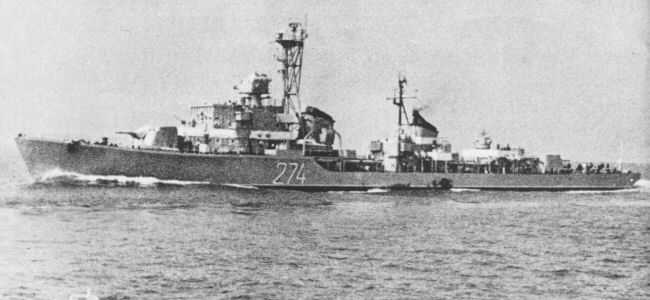|
Skoryy-class Destroyer
The ''Skory'' class were the first destroyers built for the Soviet Navy after World War II. Seventy (70) ships were built between 1949 and 1953. The Soviet designation was Project 30bis. Design The ships were derived from the Project 30 , but were slightly larger with better sea-keeping and significantly increased endurance. These ships were longitudinally framed and completely welded. The ships were built in 101 modular pre-fabricated sections which led to rapid building times. The machinery and main armament was essentially identical to those of the ''Ognevoy''-class destroyers but the boilers employed forced draught for increased power. Modernisation The ships were modernised in the 1950s with new anti-aircraft guns and anti-submarine mortars and updated sensors (new radar and sonar). One bank of torpedo tubes were removed and extra accommodation (deckhouses) added. Ships 70 ships were built for both the Soviet navy and for export, this is the largest production run for ... [...More Info...] [...Related Items...] OR: [Wikipedia] [Google] [Baidu] |
Radar
Radar is a detection system that uses radio waves to determine the distance (''ranging''), angle, and radial velocity of objects relative to the site. It can be used to detect aircraft, ships, spacecraft, guided missiles, motor vehicles, weather formations, and terrain. A radar system consists of a transmitter producing electromagnetic waves in the radio or microwaves domain, a transmitting antenna, a receiving antenna (often the same antenna is used for transmitting and receiving) and a receiver and processor to determine properties of the objects. Radio waves (pulsed or continuous) from the transmitter reflect off the objects and return to the receiver, giving information about the objects' locations and speeds. Radar was developed secretly for military use by several countries in the period before and during World War II. A key development was the cavity magnetron in the United Kingdom, which allowed the creation of relatively small systems with sub-meter resolution. Th ... [...More Info...] [...Related Items...] OR: [Wikipedia] [Google] [Baidu] |
Black Sea Fleet
Chernomorskiy flot , image = Great emblem of the Black Sea fleet.svg , image_size = 150px , caption = Great emblem of the Black Sea fleet , dates = May 13, 1783 – present , country = , allegiance = , branch = Russian Navy , type = , role = Naval warfare; Amphibious military operations;Combat patrols in the Black Sea;Naval presence/diplomacy missions in the Mediterranean and elsewhere , size = 25,000 personnel (including marines) c. 40 surface warships (surface combatants, amphibious, mine warfare) plus support and auxiliaries 7 submarines (2 of which are in the Mediterranean as of March 2022) , command_structure = Russian Armed Forces , garrison = Sevastopol ( HQ), Feodosia (Crimea) Novorossiysk, Tuapse, T ... [...More Info...] [...Related Items...] OR: [Wikipedia] [Google] [Baidu] |
ORP Wicher2 in chemistry
{{disambiguation ...
ORP may refer to: * Okręt Rzeczypospolitej Polskiej, a Polish Navy ship prefix * Operational Ration Pack, UK military * Orpington railway station, Bromley, England * O'Reilly Raceway Park at Indianapolis * Oxidation reduction potential Redox potential (also known as oxidation / reduction potential, ''ORP'', ''pe'', ''E_'', or E_) is a measure of the tendency of a chemical species to acquire electrons from or lose electrons to an electrode and thereby be reduced or oxidised respe ... [...More Info...] [...Related Items...] OR: [Wikipedia] [Google] [Baidu] |
Soviet Destroyer Volevoy (1951)
''Volevoy'' was a of the Soviet Navy which later transferred to the Indonesian Navy and renamed RI ''Siliwangi'' (201). Development The development of the first post-war destroyer project based on the previous project 30 was entrusted to the TsKB-17 team. The composition of the armament was finally specified on November 28, 1945. The technical design materials and working drawings were developed under the leadership of the chief designer A. L. Fisher (deputies G. D. Agul, K. A. Maslennikov) in the new, recreated, TsKB-53. The technical design was approved by the Decree of the Council of Ministers of the USSR No. 149-95 of January 28, 1947. The lead ship of this project was accepted into the USSR Navy on December 21, 1949, on the occasion of J.V. Stalin Joseph Vissarionovich Stalin (born Ioseb Besarionis dze Jughashvili; – 5 March 1953) was a Georgian revolutionary and Soviet political leader who led the Soviet Union from 1924 until his death in 1953. He held pow ... [...More Info...] [...Related Items...] OR: [Wikipedia] [Google] [Baidu] |

